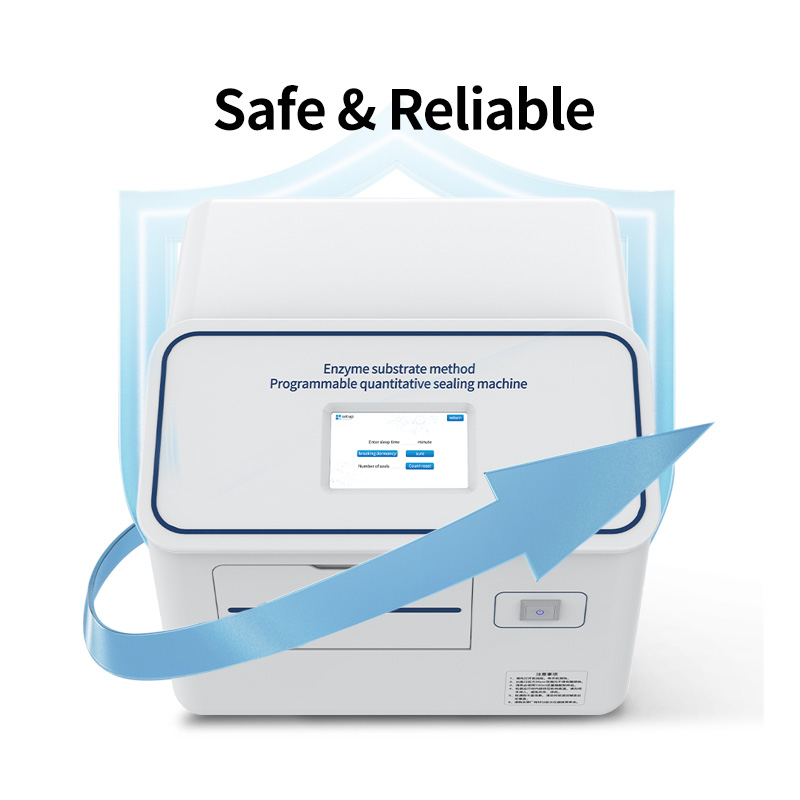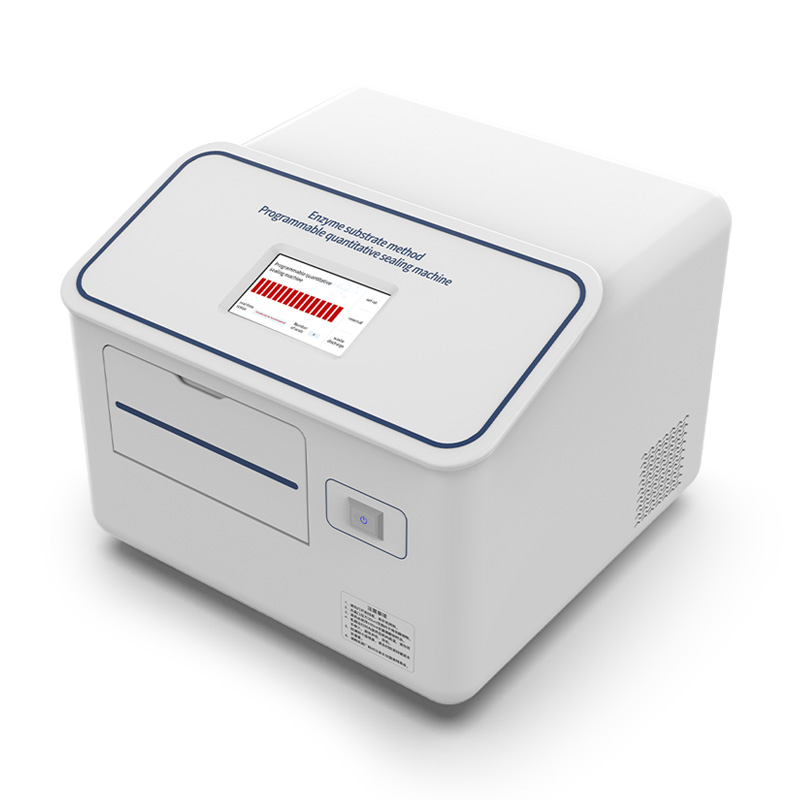
Program-controlled quantitative sealing machine
manufacturer:Shandong Horde Electronic Technology Co., Ltd.
Introduction:The manufacturer of Program-controlled quantitative sealing machine「Horde Electronic」 has mastered the research and development technology of Program-controlled quantitative sealing machine, with more than 10 years of experience in manufacturing Program-controlled quantitative sealing machine. The quality is reliable, the detection accuracy is high, and the price competitive advantage of the source manufacturer is obvious. Welcome to call for more information.
Update time:2025-12-14
- Contact: Contact Information
- Phone:008619053605658
Product Recommendation
Product Details
Overview:
Holder electronic program-controlled quantitative sealing machine is driven by intelligent circuits, with internal dedicated heating rollers, specially used for 51-hole quantitative plates and 97-hole quantitative plates. It is used with microbial detection reagents to provide simple, fast and accurate quantitative detection of total coliform bacteria, Escherichia coli, fecal (heat-resistant) coliform bacteria, enterococci and Pseudomonas aeruginosa. The 51-hole quantitative plate and 97-hole quantitative plate are semi-automatic quantitative methods designed based on the maximum probable number (MPN) statistical model of traditional methods, which can quantitatively detect water sample results. This method can replace and is superior to the traditional (membrane and multi-tube fermentation) method for detecting microorganisms in water.
Scope of application:
The program-controlled quantitative sealing machine is used for rapid detection of Pseudomonas aeruginosa, enterococci, total coliform bacteria, fecal coliform bacteria, Escherichia coli, and total colony count in water samples. It can be carried in the field, emergency, and quantitative detection.
Product description:
The enzyme substrate method detection device consists of four parts: a program-controlled quantitative sealing machine, a 51- or 97-hole quantitative detection plate, a 100mL quantitative bottle, and an enzyme substrate method detection reagent. The detection range of water samples: drinking water, source water, bottled water, reclaimed water, secondary water supply, pipe network water, wastewater, food water, livestock water, medical water, etc.
Advantages and characteristics:
The enzyme substrate method is a standard method for detecting Escherichia coli included in GB5750-2006. The enzyme substrate method is currently the most advanced method for detecting Escherichia coli in water. At present, it is gradually being recognized by domestic testing departments for its convenience, low false positives, and applicability to rapid detection of a large number of samples.
Compared with the multi-tube fermentation and membrane filter methods, the enzyme substrate method has greatly reduced detection steps, and the experimental environment requirements are not high. The detection time can be reduced to 24 hours. It has a good application prospect in daily water sample monitoring and emergency monitoring. It can detect and prevent in time, and minimize the probability of major public safety accidents. Taking the total coliform group determination in GB5750-2006 as an example, the three methods are compared, as shown in the table.
Method advantages:
1. No need to operate in a sterile room.
2. The manual operation time is less than 1 minute.
3. No culture medium preparation and large-scale glassware sterilization are required.
4. Qualitative and quantitative analysis can be completed in 24 hours without verification tests.
The MMO-MUG culture medium of the enzyme substrate method of fixed substrate technology in accordance with GB5750-2006 "Standard Test Method for Drinking Water" is equipped with a program-controlled quantitative sealing machine, and the test water sample is packaged with (51-hole quantitative plate) or (97-hole quantitative plate).
[Working Principle] Add water samples containing total coliform bacteria, and culture the target bacteria in MinimalMediumONPG-MUG medium at 36℃±1℃. The specific enzyme β-galactosidase produced by total coliform bacteria can decompose the color source substrate ONPG in MinimalMediumONPG-MUG medium, making the culture appear yellow; at the same time, Escherichia coli in the water sample produces specific β-glucuronidase to decompose the fluorescent substrate MUG in MinimalMediumONPG-MUG medium, producing characteristic fluorescence. Based on the same principle, heat-resistant coliform bacteria (fecal coliform bacteria) will decompose the color source substrate ONPG in MinimalMediumONPG-MUG medium when cultured at 44.5℃, making the medium appear yellow.
Technical parameters:
1. Used for GB5750-2006, HJ1001-2018 enzyme substrate method to detect total coliform group, Escherichia coli, fecal coliform group, etc. in water quality;
2. Reliability: no leakage, no holes;
3. Stability: can detect more than 50,000 samples, service life is more than 5 years, with ISO9001, ISO4001, ISO45001 certification;
4. Convenience: with on/off and backspace keys, quantitative disk counting, automatic energy saving function, cleaning window, error prompt function;
6. One-key drainage function;
7. Large LCD display window, 4 buttons;
8. No need for sterile room, 24h detection of total coliform bacteria, Escherichia coli and thermotolerant coliform bacteria in water;
9. Preheating time: ≤3min;
10. Noise: <48dba;
11. Cover temperature: <40ºC;
12. Sealing speed: 10 seconds;
13. Working voltage: AC220V±10%, 50HZ;
14. Sealing speed: 51-hole and 97-hole quantitative detection tray sealing time ≤12 seconds/piece;
15. Working environment temperature: -10ºC-50ºC;
16. Detection range: With 51-well quantitative detection plate, the detection range is 0-200MPN/100ml (water sample is not diluted); with 97-well quantitative detection plate, the detection range is 0-2419MPN/100ml (water sample is not diluted);
17. Dimensions: 408 (length) X340 (width) X300 (height) mm;
18. Weight: 12kg
Product's Website:http://en.huoerd.com/szwswjcy/1397.html
 中文版
中文版 English
English




 Home
Home Phone
Phone Product
Product Contact
Contact